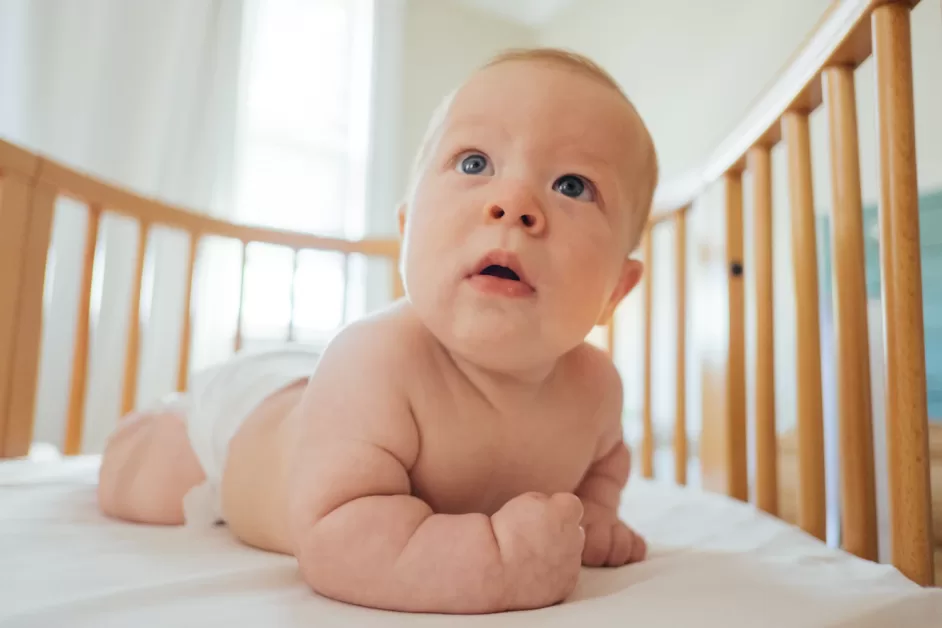Disposable nappies cannot be recycled in the US, so are biodegradable nappies a better solution if you’re trying to be more eco-friendly?
Disposable nappies generate a lot of plastic waste, with billions of nappies thrown away in the US each year. If you’re conscious about your environmental footprint, biodegradable nappies quickly began to sound like an attractive option.
Studies show that 35% of parents who buy biodegradable nappies do so because they think they’re better for the environment. But can we be sure that they are in fact more sustainable than regular disposable nappies?
We’ve carried out the research and have an answer.
Are Nappies Biodegradable?
No, they are not. They contain various plastic materials which prevent nappies from being able to completely decompose in landfill conditions.
Do Biodegradable Nappies Biodegrade?
Yes, up to a certain point. Biodegradable nappies are usually made from a natural fibrous material which will break down over time.
The problem is that no nappy is produced entirely from this material, with most being made with materials that are no more than 95% biodegradable. This means that the plastic outer film is usually the problem rather than the internal core.
Since disposable nappies are rolled up with this plastic film on the outside, it will shield the biodegradable core and prevent them from biodegrading within a landfill site.
What are Biodegradable Nappies?
Anything that is biodegradable will break down in the right conditions including temperature, the presence of oxygen and the presence of bacteria or microorganisms.
There is no legislation that nappy manufacturers have to comply with to prove the biodegradability of their nappies. The UK introduced a British Standard in 2020 but it is voluntary and only relates to nappies biodegrading in the open air, not a landfill site.
The most popular brands selling biodegradable nappies include companies like Mum & You, Naty and Kit & Kin. Many nappies claim to be biodegradable but few nappies are made completely from 100% biodegradable materials.
The outer layer of nappies contains polyethylene film and the sticky tabs are made from polyurethane.
Do Biodegradable Nappies Break Down in Landfill?
Even nappies made with a high proportion of biodegradable materials will struggle to decompose under landfill conditions.
Microbes and oxygen are needed to aid the biodegradation process, and landfill sites are designed to reduce these factors. To degrade properly, these materials would need to be composted.
Biodegradable materials will only break down if they’re exposed to the environment.
Kit & Kin actually recommend placing their used nappies inside a biodegradable nappy sack and placing it outside of the bin liner to maximise oxygen exposure.
This includes biodegradable wipes – they can’t biodegrade if rolled up inside a nappy.
Are There Environmental Impacts to Using Biodegradable Nappies?
If biodegradable nappies do break down, there is a risk that any substances released could harm the environment.
A biodegradable nappy may be made from natural materials, but that doesn’t mean it will biodegrade into natural substances that are non-toxic to the environment.
The environmental impact of nappies throughout their lifecycle also needs to be considered. Some studies show that the manufacture of disposal nappies is actually more harmful that disposing of them.
For example, the biopolymers used in biodegradable nappies can be more energy intensive to produce compared with traditional petroleum-based polymers used in non-biodegradable nappies.
Are Some Biodegradable Nappies Better for the Environment?
Nappies containing natural fibres that are sustainably grown and harvested are more environmentally friendly than synthetic nappies. This type of nappy will always be better for the environment.
Choose nappies made from sustainable materials. The absorbent part of disposable nappies is typically made from wood pulp. This is a natural material, but if the trees that the pulp is harvested from are not sustainably managed, this can lead to deforestation.
Are Reusable Nappies a More Environmentally Friendly Option?
Around 48% of parents said they choose reusable nappies because they think they’re better for the environment.
We agree that the most environmentally friendly choice is reusable nappies, but you do also need to take into account the water and electricity consumption required for washing.
Also, reusable nappies made of synthetic fibres can shed microplastics, causing further pollution. Plant based materials such as cotton, bamboo and hemp are more environmentally friendly, but non-organic cotton should be avoided if possible because it requires high amounts of fertiliser, pesticide and water to produce.
Conclusion
No nappy available on the market today is 100% biodegradable, although some brands are far more sustainable than others.
Much of the problem is that all nappies will have an outer layer made from plastic film which acts as a barrier to biodegradation.
You also have the issue that landfill conditions are less than favorable for biodegradation as they lack oxygen and bacteria.
